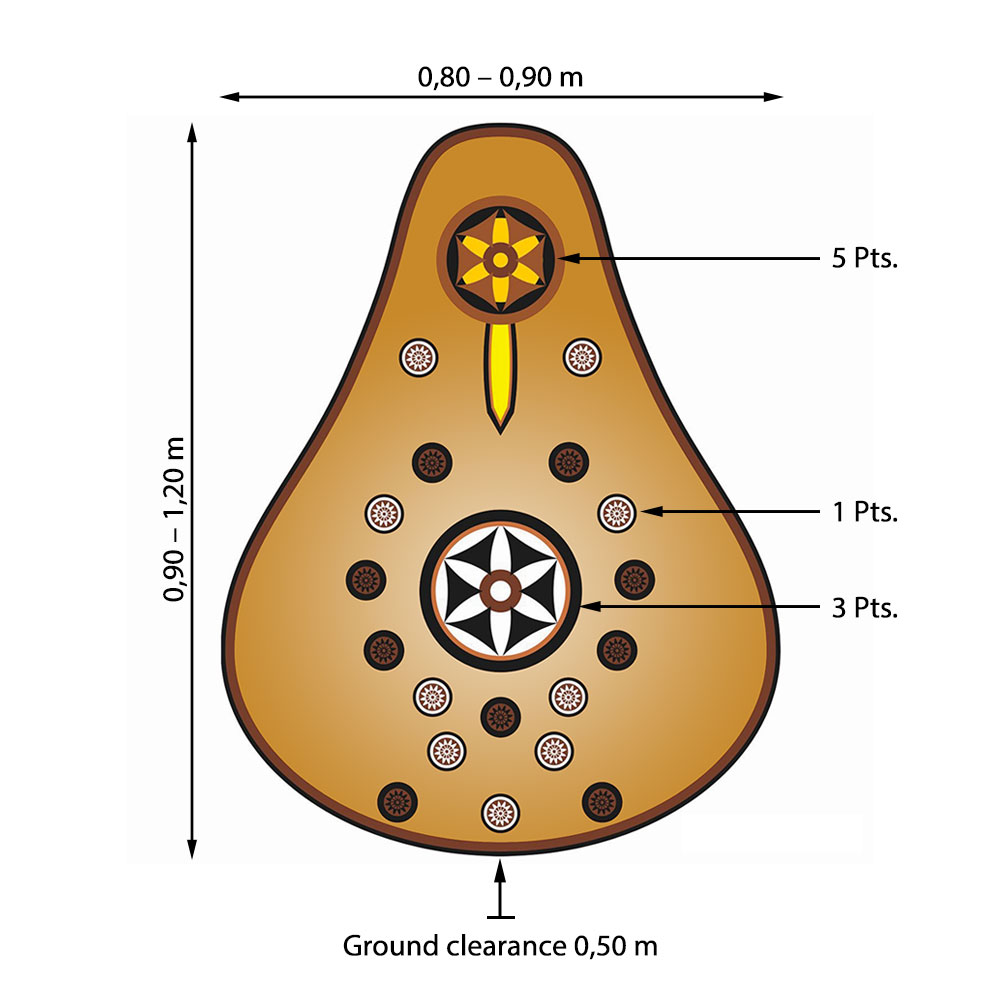Width: 0,77 – 0,90 m
Height: 107 – 1,20 m
Adaptation for T.A.I.
Shooting distance: 70 - 120 m
6 arrows to shoot
Historical background:
Traditional made of leather, the word “Puta” is ethymologically related to the Persian word “Bute” which means “Jug or Pot made of clay”.
Putas found their final form in the 18th century. They were 107 centimeters in height and 77 centimeters in width, and the depth of the puta was about 8 to 10 centimeters. A pear shaped, double layered leather pillow would be placed into a wooden or reed frame, also covered with leather. The pillow would be filled with cotton seed or saw dust. After these steps, shapes in different colours would be drawn on the puta. Finally little bells would be attached to the bottom of the puta. The bells would make a sound when the puta were hit, thus informing shooters. Seeing a hit could be difficult due long distances. Despite the lack of concrete historical evidence regarding the meaning of shapes and colors on putas, one could speculate that it might be a way to create several different targets on the same puta. The purpose of the little bells is obvious however; they were to inform the archers or the audience of hits, as described above.
Since its inception, several different rules emerged and applied to puta shooting. Puta shooting competitions were called “puta koşusu” (puta run). Puta shooting, while differing for every okmeydanı (archery range; there were several across the Ottoman Empire and the Middle East) was usually done from a distance of 250-400 gez (165-265 meters) and the shooting was done from a place called “sofa”.
Source: Murat Özveri, Tirendaz, Turkey -> detailed information

